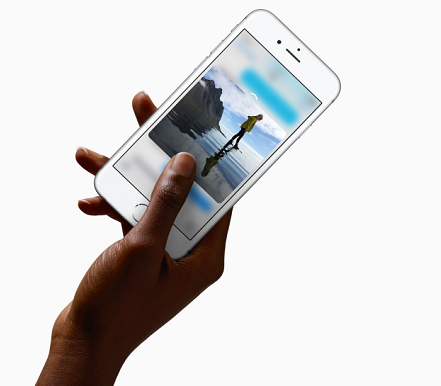Apple TV: Not Quite Ready For Prime Time?
Apple's fourth-generation Apple TV went on sale last week, and so far the reviews have been mixed.

9 iPhone Apps Perfect For 3D Touch
9 iPhone Apps Perfect For 3D Touch (Click image for larger view and slideshow.)
The latest-generation Apple TV has hit store shelves and early reviews have been mostly positive, but also point out some shortcomings.
At $149 with 32GB ($199 for 64GB) the new Apple TV device is double the price of the model that preceded it. The company has said that at the core of its latest Apple TV device is a rethinking of how users interact with a television. It aims to give them an easier path to follow.
Siri -- Apple's voice recognition software -- plays a key role in this shift, by attempting to use voice commands to eliminate the multiple button-presses usually needed to access TV features using a remote control.
However, Yahoo's David Pogue pointed out that you can't use Siri to dictate text entry.
"There's still a lot of text entry on the Apple TV -- every time you enter your account information into an app, for example, or when you're searching the Apple TV app store -- and it's excruciating. You have to slide over to one letter after another on this absurdly designed layout [which puts all 26 letters of the alphabet on a single line]," Pogue wrote.
Another part of the user experience that Apple says it re-thought was the setup process. Setup now simply requires that your iPhone to be brought near the box. Your AppleID and WiFi login are imported into the Apple TV device, and you are off to the races.
Well, sort of. As with a Roku and other streaming devices, you need to sign into individual pay channels (Netflix, Hulu, and the like) and have your cable service wire available for your television set.
Don't forget that Apple TV will have to have an active connection to the Internet during this setup in order for Home Sharing to be configured. HS shares content between your Mac and Apple TV, as long as the Mac and the TV box are on the same local network and the Mac is actively running iTunes.
iTunes content has to be bought a la carte, as do apps in Apple TV's app store.
{Image 1}
So, instead of typing in a search term with your remote's buttons, Apple TV lets you tell Siri what you want. It will then search all the available data streams, including pay and non-pay content apps, much faster.
The Apple TV remote has a swipe pad at its top, enabling the user to touch and move a cursor when that is called for. You might do that after asking Siri to find you a funny movie, and the choices then pop up at the bottom of the screen.
"The combination of the remote and interface feels tight and polished and futuristic in a way that makes Roku and Fire TV feel plastic and utilitarian. I will say that the touchpad can be more flashy than useful -- there isn't a single part of the main interface that actually requires it, and you can get around just fine using a universal remote with a D-Pad," notes Nilay Patel in The Verge.
[Read Apple Drops Watch Price When Bundled With iPhone.]
Apple TV runs on the tvOS operating system, based on iOS, which means that developers can create new apps and games specifically for Apple TV and sell them through the new Apple TV App Store.
However, Patel bemoaned the current lack of tvOS app interactivity in her review, "At this moment, there's not a single app on the Apple TV that enhances the experience of watching TV nearly as much as simply opening Twitter on your phone during an awards show. ... But all of that is very much the best version of television's present. Apple has a lot more work to do before the future actually arrives."
Still, Geoffrey Fowler of The Wall Street Journal writes, "The TV of the future needs to be as powerful and easy to use as an iPhone, and this Apple TV is the first box -- and the first Apple TV -- to achieve that."
About the Author(s)
You May Also Like
How to Amplify DevOps with DevSecOps
May 22, 2024Generative AI: Use Cases and Risks in 2024
May 29, 2024Smart Service Management
June 4, 2024








